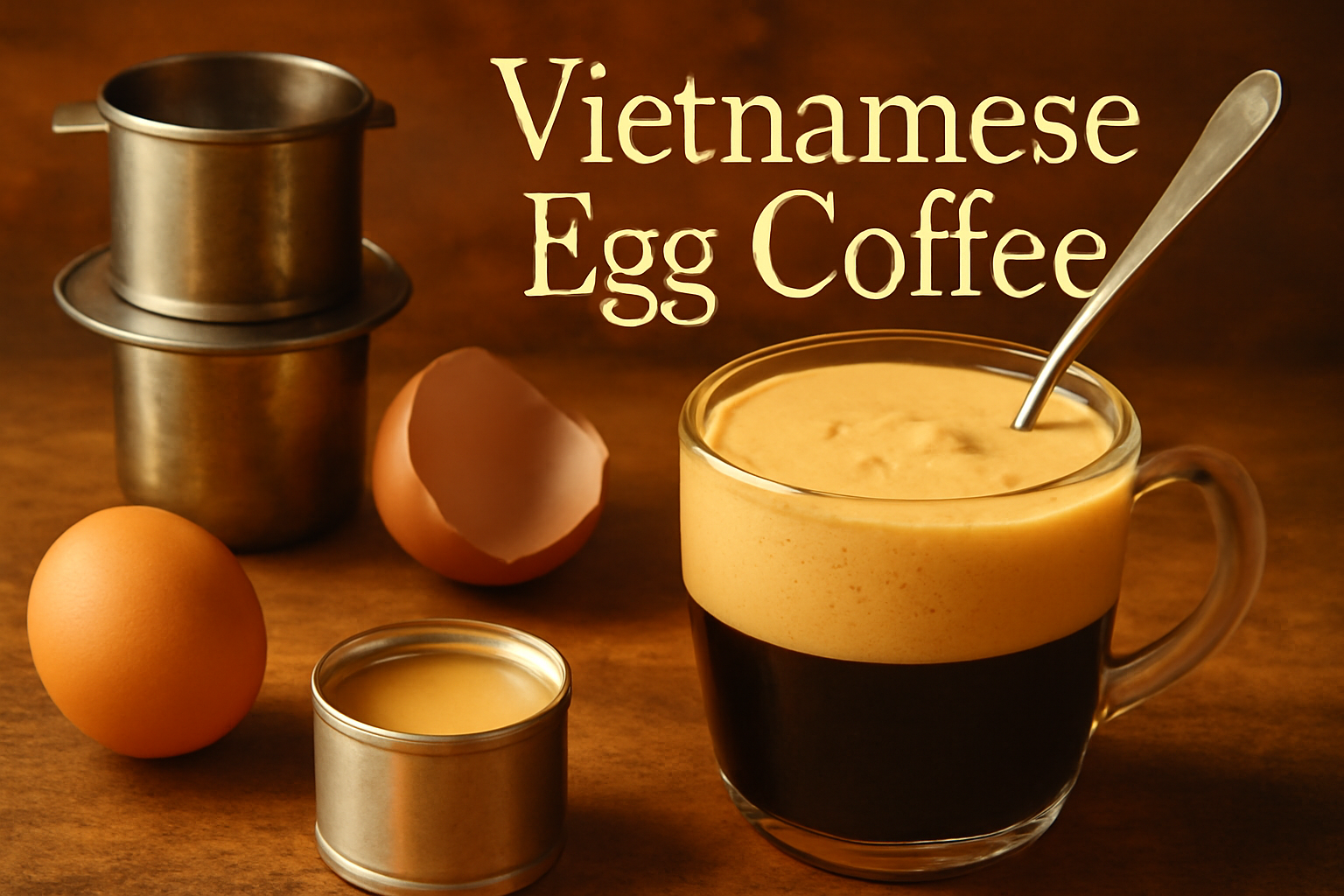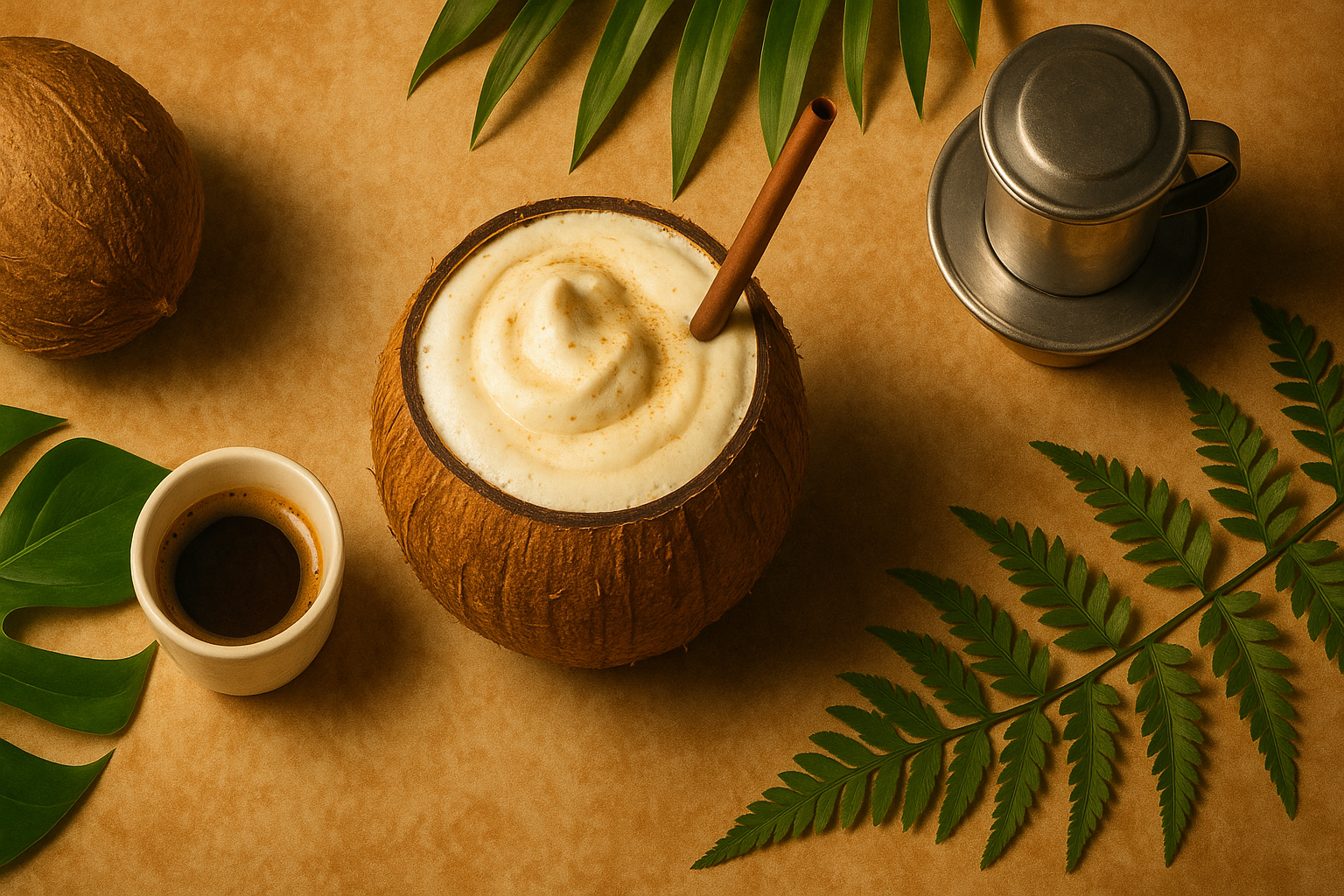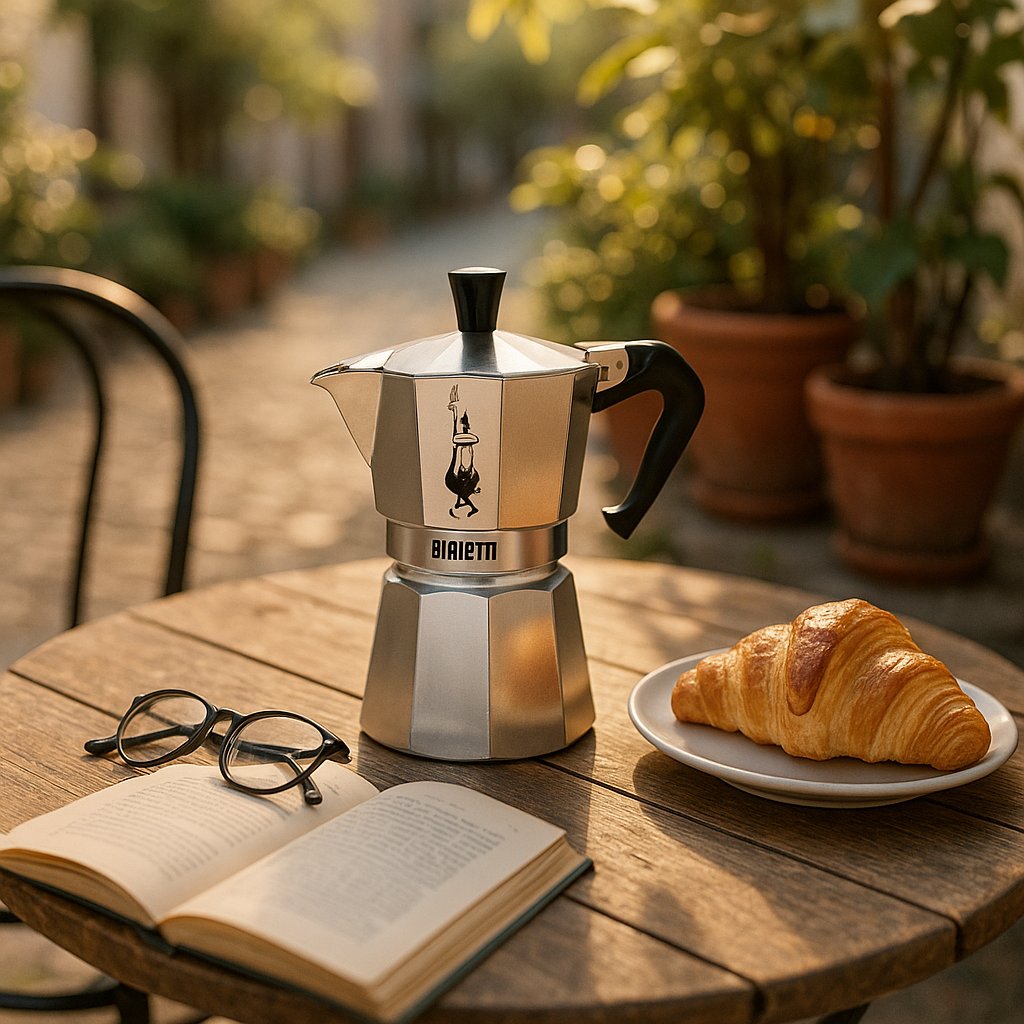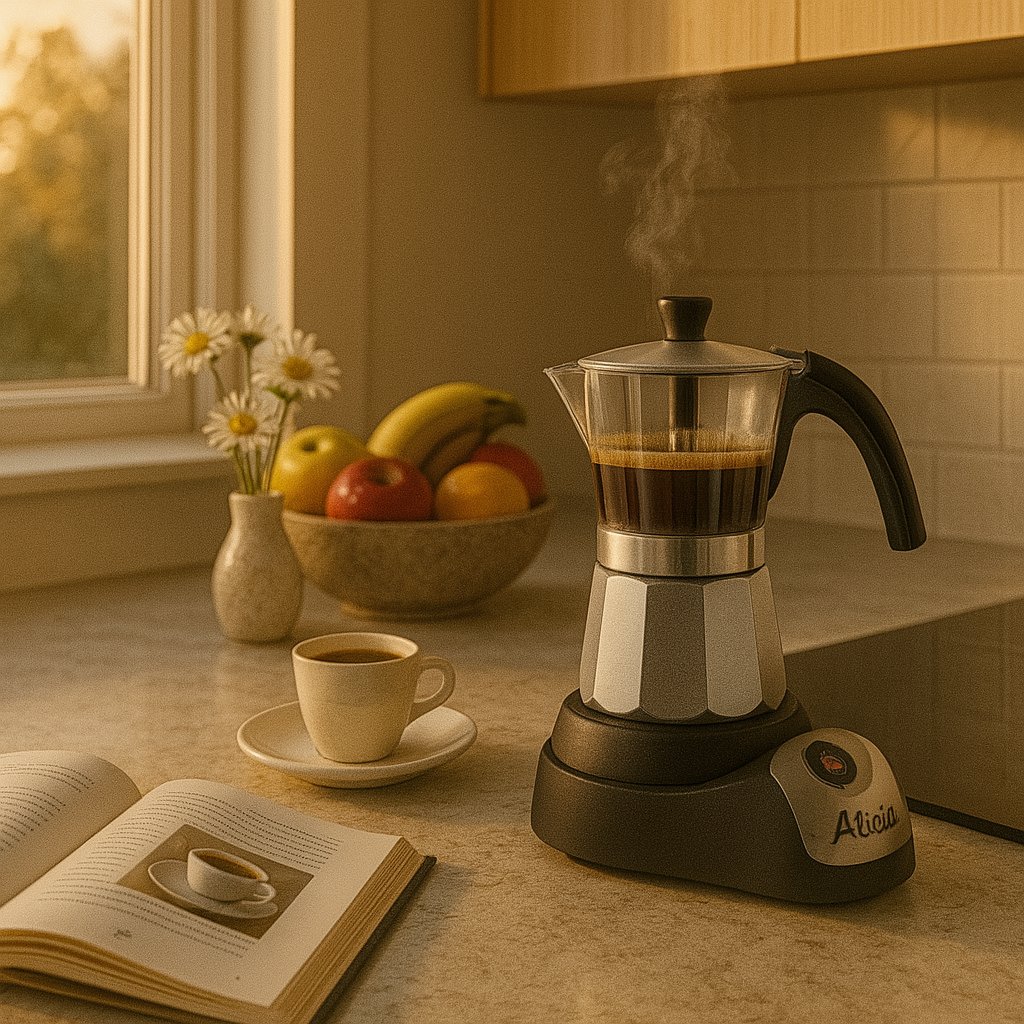How to Make Vietnamese Egg Coffee
Discover the secrets of authentic Vietnamese egg coffee (cà phê trứng) with Marco's complete guide. Learn the traditional Hanoi recipe, techniques, and variations for creating this luxurious, creamy coffee drink at home.

Introduction: My First Encounter with Hanoi's Liquid Gold
I'll never forget stepping into the narrow alleyways of Hanoi's Old Quarter on a humid morning in 2018, following my nose toward the intoxicating aroma of roasted coffee. What I discovered at Giang Café wasn't just coffee—it was pure magic. Watching the barista methodically whisk egg yolks with condensed milk into a cloud-like foam, then gently float it atop dark, robust Vietnamese coffee, I knew I was witnessing something extraordinary. That first sip of cà phê trứng (egg coffee) was a revelation: silky, rich, and unlike anything I'd ever experienced in my years of coffee exploration.
The contrast between the bitter, strong coffee base and the sweet, velvety egg cream created a harmony that seemed almost impossible. It was like drinking a caffeinated crème brûlée, and I became instantly obsessed with understanding how this seemingly unusual combination could create such culinary perfection. That obsession led me to spend weeks in Hanoi, learning from the masters who've been perfecting this craft for generations.
Vietnamese egg coffee isn't just a drink—it's a testament to creativity born from necessity, a cultural artifact that tells the story of Hanoi's resilience and ingenuity. In this comprehensive guide, I'll share everything I learned about creating authentic egg coffee at home, from the traditional techniques passed down through generations to modern adaptations that maintain the essence while accommodating different kitchens and tastes.
The Soul of Vietnamese Coffee Culture
Egg coffee represents the pinnacle of Vietnamese coffee innovation—a drink that transforms simple ingredients into an extraordinary experience. Mastering this recipe means understanding not just technique, but the culture and history that created it.
The Fascinating History and Origins
The Birth of Cà Phê Trứng (1946)
Vietnamese egg coffee was born in 1946 at Giang Café in Hanoi, created by Nguyen Van Giang, a bartender at the legendary Sofitel Legend Metropole Hotel. During the French colonial period, when milk was scarce and expensive, Giang ingeniously substituted beaten egg yolk with sugar to create the creamy texture that coffee lovers craved.
What started as a wartime necessity became a beloved tradition. Today, Giang Café—now run by Nguyen's descendants—remains the epicenter of egg coffee culture, attracting coffee pilgrims from around the world to experience this unique Hanoi treasure.
Why Egg Coffee Works: The Science Behind the Magic
The brilliance of egg coffee lies in the science of emulsification. When egg yolks are whipped with sugar and condensed milk, they create a stable foam through a process similar to making mayonnaise. The lecithin in egg yolks acts as a natural emulsifier, binding fats and water while creating that signature cloud-like texture.
The temperature contrast is equally important. The hot, bitter coffee provides a sharp contrast to the cool, sweet egg cream, creating a sensory experience that engages multiple taste receptors simultaneously. This temperature differential also helps maintain the foam's structure, preventing it from immediately mixing into the coffee.
Cultural Context
In Vietnamese coffee culture, egg coffee represents innovation within tradition. While Vietnam is famous for its robusta beans and unique brewing methods, egg coffee shows how Vietnamese coffee masters continuously evolve their craft while respecting core principles.
Essential Ingredients for Authentic Egg Coffee
Creating authentic Vietnamese egg coffee requires specific ingredients that each play a crucial role in achieving the perfect balance of flavors and textures. Quality matters enormously—each component contributes to the final result's authenticity and deliciousness.
Traditional Cà Phê Trứng Ingredients
Serves: 1 traditional serving | Prep Time: 15 minutes | Skill Level: Intermediate
For the Coffee Base:
- 3 tablespoons Vietnamese coffee grounds - robusta preferred, finely ground
- 120ml (1/2 cup) hot water - just off boiling (200°F)
- Alternative: 60ml strong espresso or concentrated coffee
For the Egg Cream:
- 2 fresh egg yolks - room temperature, from free-range eggs
- 2-3 tablespoons sweetened condensed milk - adjust to taste
- 1 tablespoon white sugar - granulated, essential for texture
- Optional: 1 tablespoon mascarpone cheese for extra richness
Equipment Needed:
- Vietnamese phin filter - or alternative brewing method
- Electric hand mixer or whisk - manual whisking requires significant effort
- Small mixing bowl - preferably chilled
- Heat-resistant glass or ceramic cup - for serving
- Small spoon - for layering and stirring
Ingredient Quality and Substitutions
Coffee Selection
- • Best: Vietnamese robusta coffee (Trung Nguyên, Highlands)
- • Alternative: Dark roast with earthy, bold flavors
- • Grind: Fine, similar to espresso grind
- • Strength: Must be strong enough to taste through egg cream
Egg Quality
- • Freshness: Use eggs within 1 week of purchase
- • Temperature: Room temperature eggs whip better
- • Color: Orange yolks create richer flavor and color
- • Safety: Buy from reputable sources for raw consumption
Food Safety Important Note
This recipe uses raw egg yolks. Pregnant women, elderly individuals, young children, and those with compromised immune systems should avoid consuming raw eggs. Always use fresh, high-quality eggs from trusted sources and consume the drink immediately after preparation.
Step-by-Step Traditional Recipe
Creating perfect Vietnamese egg coffee is all about timing and technique. The process requires patience and precision, but the results are absolutely worth the effort. Follow these steps carefully for authentic results.
Part 1: Preparing the Coffee Base
Set Up Your Vietnamese Phin Filter
Place the phin filter over your serving cup. Add 3 tablespoons of finely ground Vietnamese coffee to the filter chamber. Level the grounds but don't pack them down—Vietnamese coffee needs room for the slow drip process.
Bloom the Coffee
Pour about 30ml of hot water (200°F) over the grounds to bloom them. Wait 30 seconds for the coffee to expand and release its aromas. This step is crucial for proper extraction.
Complete the Brewing
Place the metal press on top of the grounds with gentle pressure. Add the remaining 90ml of hot water. The coffee should drip slowly over 4-5 minutes. If it drips too fast, your grind is too coarse; too slow means too fine.
Keep the Coffee Hot
Once brewing is complete, keep the coffee hot by placing the cup in a bowl of hot water or on a warming plate. The coffee needs to be steaming hot when you serve the egg coffee.
Part 2: Creating the Perfect Egg Cream
Separate and Prepare Eggs
Carefully separate 2 egg yolks from the whites, ensuring no white gets into the yolks (it will prevent proper whipping). Let the yolks come to room temperature for easier whipping—about 15 minutes out of the refrigerator.
Start Whipping
In a chilled bowl, begin whisking the egg yolks with an electric mixer on medium speed. Add the sugar gradually while whisking. This process should take 2-3 minutes until the mixture becomes pale and slightly thick.
Add Condensed Milk
Slowly drizzle in the sweetened condensed milk while continuing to whip. Increase the mixer speed to high and whip for 8-10 minutes until the mixture becomes fluffy, light-colored, and holds soft peaks. The mixture should triple in volume.
Check for Perfect Consistency
The egg cream is ready when it holds its shape but isn't stiff. It should be mousselike and flow slowly when lifted with the whisk. If it's too thick, briefly whisk in a teaspoon of condensed milk.
Part 3: Assembly and Serving
Layer with Care
Using a large spoon, gently float the egg cream on top of the hot coffee. Start from the center and work outward, allowing the cream to spread naturally. Don't stir—the layered presentation is part of the experience.
Serve Immediately
Serve the egg coffee immediately while the temperature contrast is at its peak. Provide a small spoon so drinkers can stir the cream into the coffee as they drink, creating different flavor experiences with each sip.
Master's Secret
At Giang Café, they serve egg coffee in a small bowl of hot water to maintain temperature. This traditional presentation not only keeps the drink warm longer but also adds to the ceremonial aspect of enjoying this special coffee.
Troubleshooting Common Issues
Even experienced coffee makers can encounter challenges when first attempting Vietnamese egg coffee. Here are the most common issues and their solutions, based on my own learning curve and teaching this recipe to countless coffee enthusiasts.
Egg Cream Problems
❌ Problem: Egg cream won't whip or stays runny
Causes: Cold eggs, egg whites contamination, insufficient whipping time
Solutions:
- Ensure eggs are at room temperature (15-20 minutes out of fridge)
- Start over if any egg white got mixed in
- Whip for the full 8-10 minutes—this is crucial
- Use an electric mixer; hand whipping is extremely difficult
❌ Problem: Cream is too sweet or not sweet enough
Adjustment strategy: Taste as you go and adjust gradually
Solutions:
- Too sweet: Add another egg yolk and re-whip
- Not sweet enough: Add condensed milk gradually while whipping
- For less sweet version: Reduce sugar but maintain condensed milk for texture
Coffee and Assembly Issues
⚠️ Problem: Egg cream sinks into the coffee immediately
Causes: Coffee too hot, cream not whipped enough, pouring too aggressively
Solutions:
- Let coffee cool for 1-2 minutes before adding cream
- Ensure cream holds soft peaks before layering
- Use a large spoon to gently float cream on surface
- Add cream in small portions rather than all at once
⚠️ Problem: Coffee tastes too weak or too strong
Balance is key: The coffee must be strong enough to taste through the rich egg cream
Solutions:
- Too weak: Use more coffee grounds or finer grind
- Too strong: Dilute with a small amount of hot water
- Ideal strength: Should taste slightly stronger than your usual preference
Practice Makes Perfect
Don't be discouraged if your first few attempts aren't perfect. Vietnamese egg coffee requires practice to master the timing and technique. Each attempt teaches you something new about achieving the perfect balance of flavors and textures.
Modern Variations and Creative Adaptations
While respecting the traditional recipe is important, Vietnamese egg coffee has inspired numerous creative variations around the world. These adaptations maintain the essence of the original while offering new experiences for different palates and dietary needs.
Seasonal and Flavor Variations
Iced Egg Coffee
- • Brew coffee normally and let cool completely
- • Whip egg cream as usual
- • Serve over ice with cream on top
- • Perfect for hot weather enjoyment
Coconut Egg Coffee
- • Replace half the condensed milk with coconut cream
- • Add a pinch of toasted coconut flakes
- • Creates tropical flavor profile
- • Popular in southern Vietnam
Dietary Adaptations
Vegan-Friendly Alternative
Aquafaba Egg Coffee: Replace egg yolks with 3 tablespoons aquafaba (chickpea liquid)
- Whip aquafaba with sugar for 10-15 minutes until stiff peaks form
- Add vegan condensed milk or coconut cream
- Results in similar texture with plant-based ingredients
- May require longer whipping time than traditional version
International Interpretations
Coffee cultures around the world have embraced and adapted Vietnamese egg coffee, creating unique regional interpretations that honor the original while reflecting local tastes and ingredients.
Italian Style
Uses espresso base with mascarpone added to egg cream for extra richness
Korean Dalgona Twist
Combines egg coffee technique with whipped instant coffee for double creaminess
Mexican Interpretation
Adds cinnamon and vanilla to the egg cream, served with piloncillo
Conclusion: Bringing Hanoi's Magic to Your Kitchen
From that first magical sip in Hanoi's Old Quarter to mastering the technique in kitchens around the world, Vietnamese egg coffee has taught me that the most extraordinary culinary experiences often come from the simplest innovations. What Nguyen Van Giang created in 1946 wasn't just a substitute for scarce milk—it was a completely new way to experience coffee, one that transforms humble ingredients into something transcendent.
The beauty of egg coffee lies not just in its unique flavor profile, but in what it represents: creativity born from constraint, tradition that embraces innovation, and the power of coffee to bring people together across cultures and generations. When you whip those egg yolks into clouds of sweetness and float them atop robust Vietnamese coffee, you're not just making a drink—you're participating in a tradition that spans nearly eight decades.
Mastering this recipe requires patience, practice, and respect for the technique. Your first attempts might not match the perfection of Giang Café, and that's perfectly normal. Each cup you make teaches you something new about timing, texture, and balance. The journey to perfect egg coffee is as rewarding as the destination itself.
As Vietnamese coffee culture continues to influence the global coffee scene, egg coffee stands as a testament to innovation within tradition. Whether you're creating the classic version or experimenting with modern adaptations, remember that you're carrying forward a legacy of creativity that started with one man's ingenuity during wartime and has grown into a beloved ritual enjoyed around the world.
The next time you need to slow down and savor something special, brew yourself a cup of Vietnamese egg coffee. Let the process of whipping, floating, and sipping remind you that the most extraordinary experiences often come from taking time to do something mindfully, with care, and with respect for the traditions that make our coffee culture so rich and diverse.





